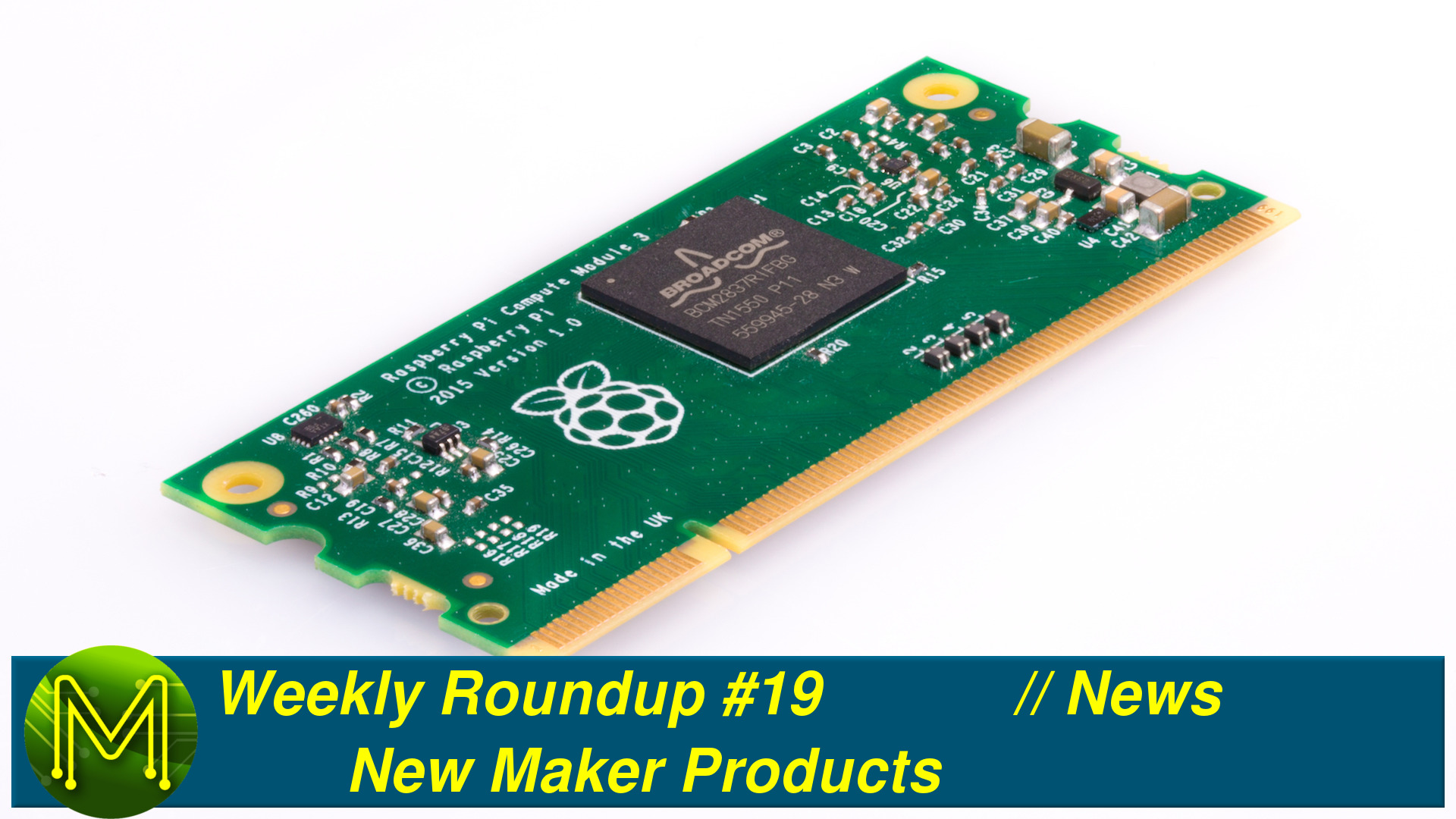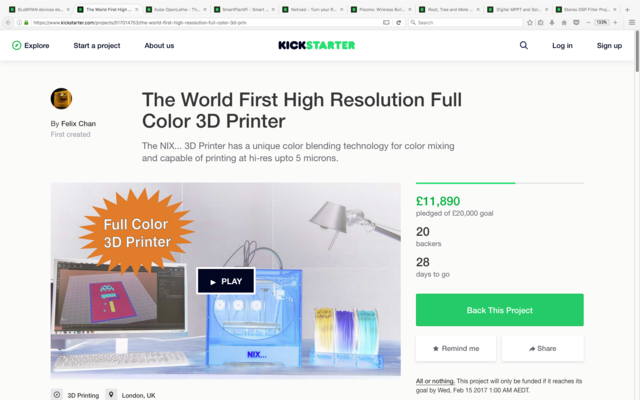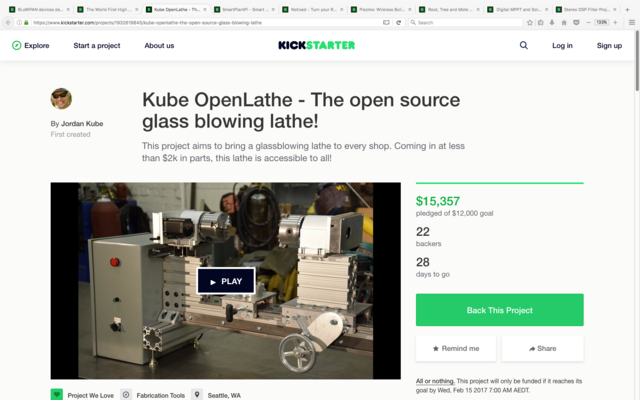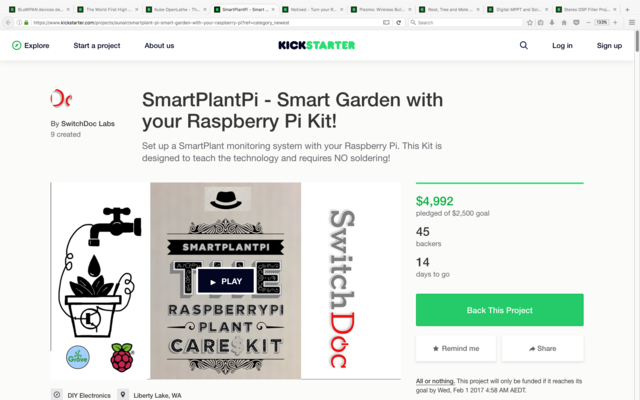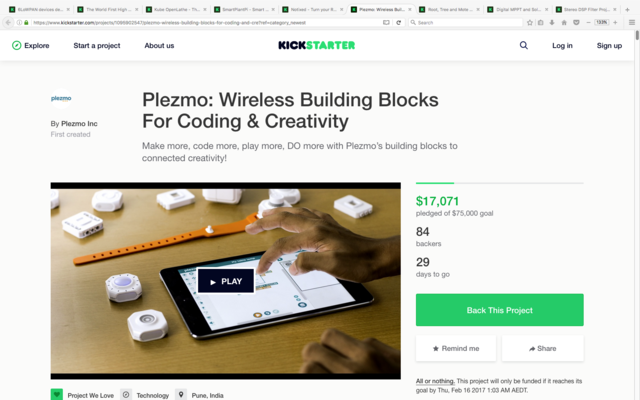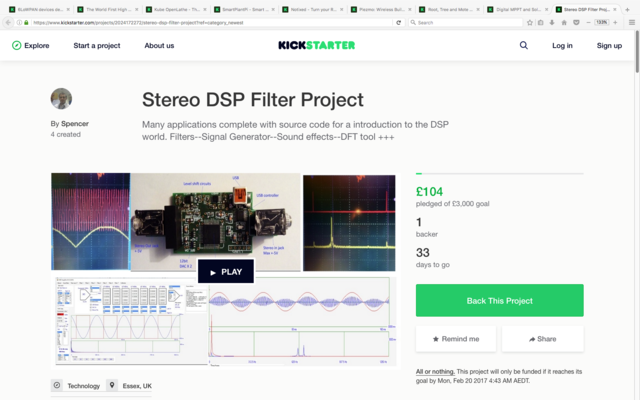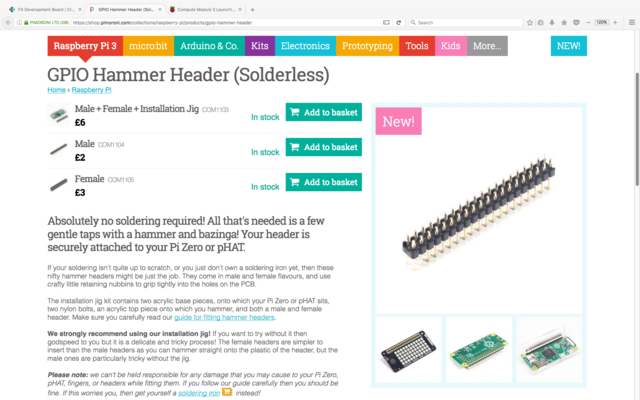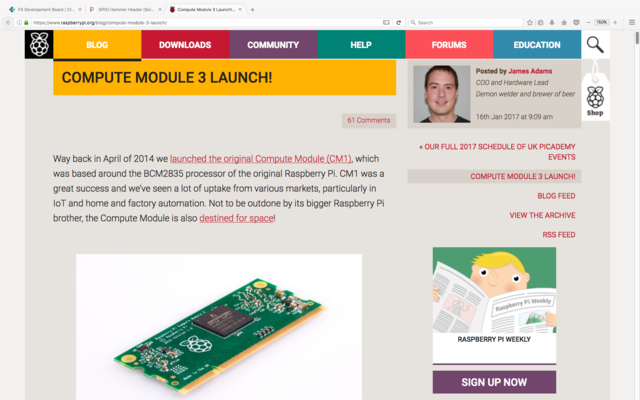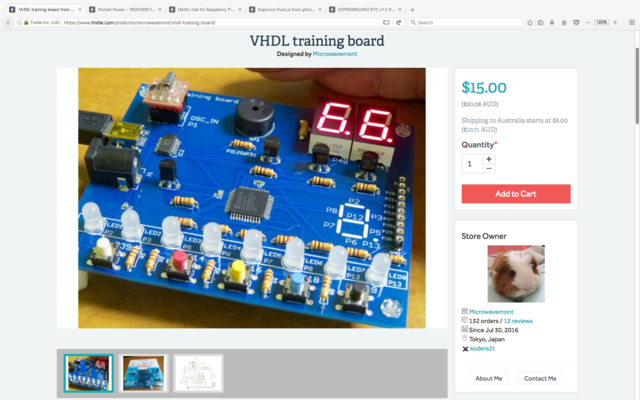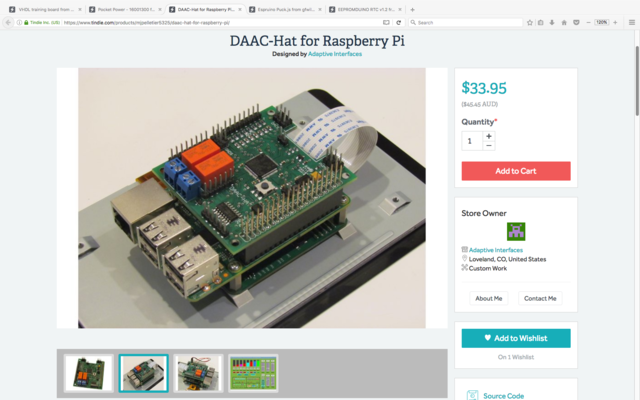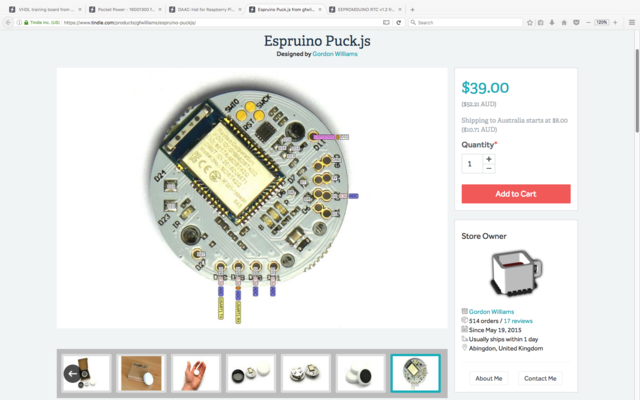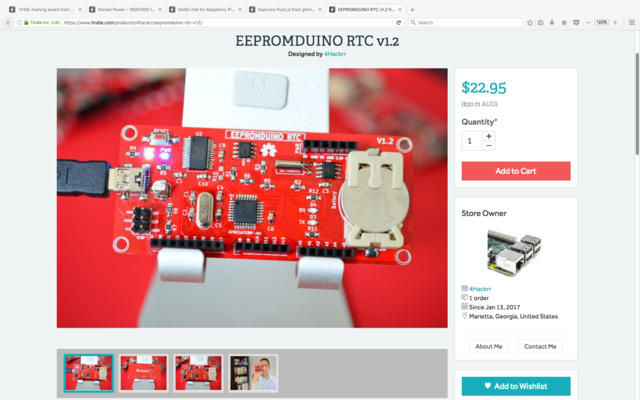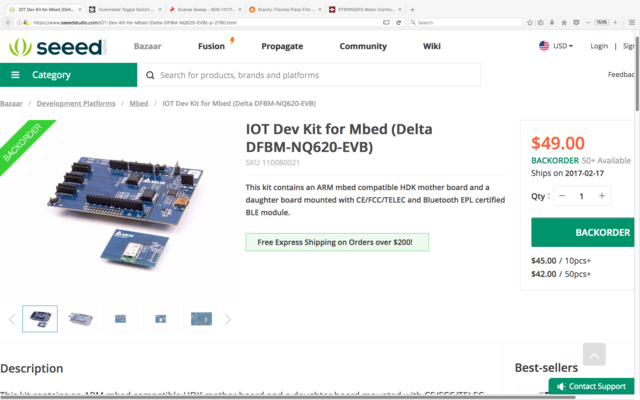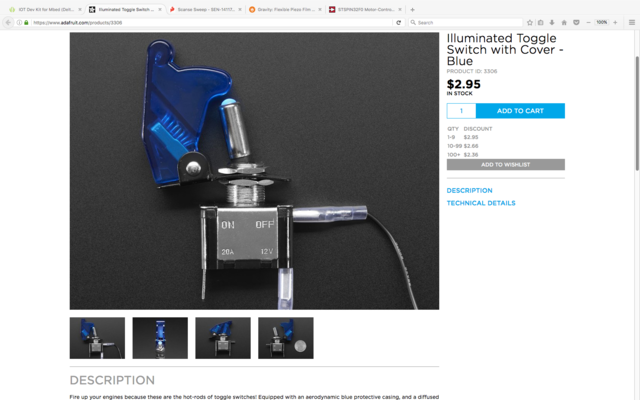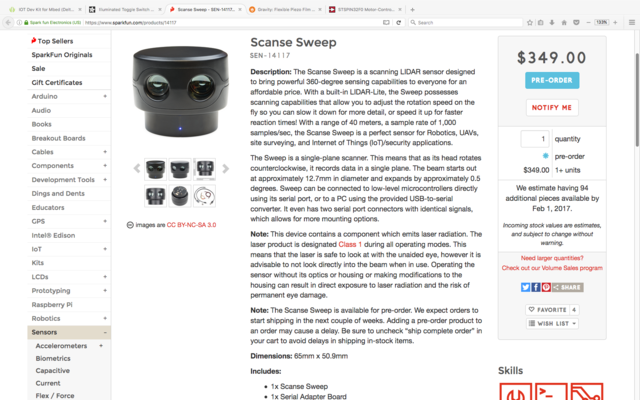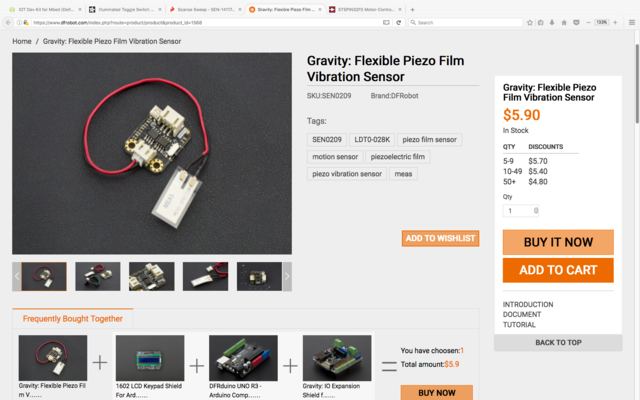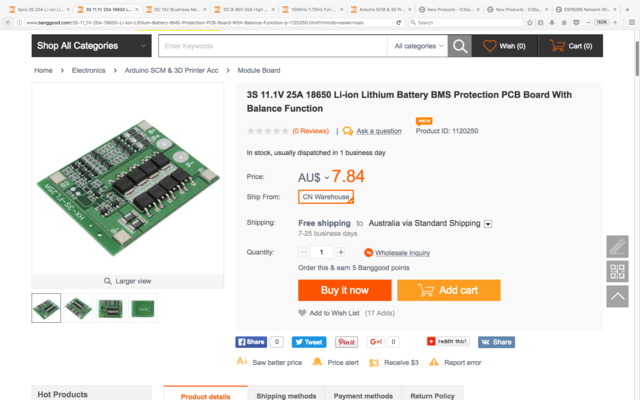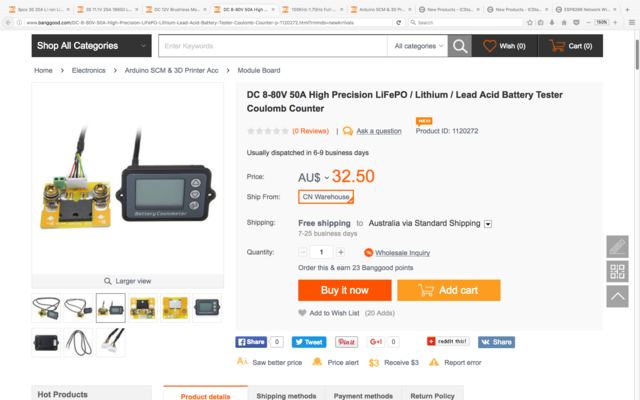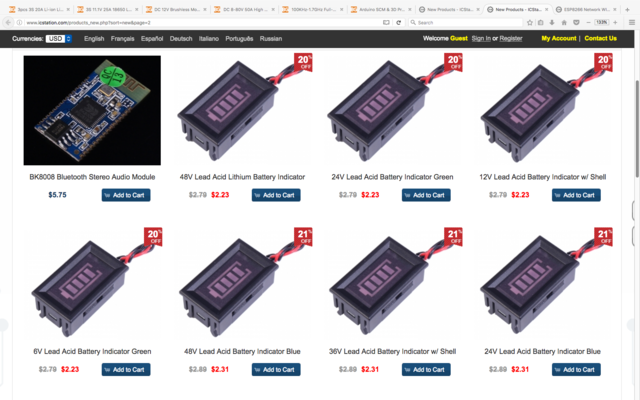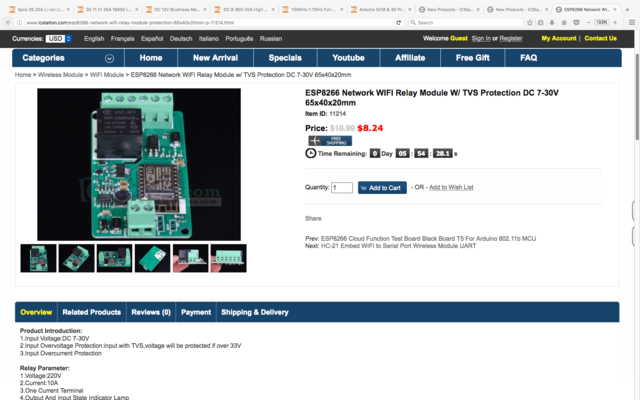Weekly Roundup #19 - New Maker Products // News
This week’s Weekly Roundup is fairly light. Not much happening, but there’s a few interesting things. It’s a case of the good, bad and ugly.
Crowd Funding
KickStarter
This week on Kickstarter there’s a bunch of simple, but interesting products.
SmartMachine® and SmartModule
This first Kickstarter has two products: the SmartMachine and SmartModule. These are two IoT boards that contain an ARM Cortex M3 and pushing out a number of GPIOs. The SmartMachine can be powered from coin cell battery or USB and the Module from any 3V supply. They all have inbuilt slowpan, (6LowPAN), communication.There’s also an SM gateway which is identical to the SmartMachine, but contains an ethernet port instead.
NIX
Do you want a 5 micrometer full colour 3D printer? Well, there’s one on Kickstarter which claims to be able to do just that. The campaign is a little scant on information, but it claims to be able to blend 3 different colour filaments to make any colour you want. Will be interesting to see how this one goes.Kube OpenLathe
Another one with scant information, but is an interesting idea. A glass blowing lathe! We’re starting to see a lot more unusual desktop fabrication machines now. This one looks a little rough and even the creator mentions that it’s not perfect.SmartPlantPi
Unusually this one seems to be doing well. It’s a educational Pi based kit that will monitor a small garden bed. It’ll monitor things like air quality, temperature, humidity, sunlight, infrared and UV index. It also has an OLED, buttons and knobs to be used as a simple user interface.All the data can be sent back to the creator’s website that you can view.
Notixed
A simple idea that requires no soldering. This will allow your Pi Zero to be connected directly to a PC USB port without cables. It uses pogo pins to connect to the USB port of the Zero and provides a standard USB plug.Plezmo
Plezmo is yet another building block IoT style product. They have a fully functional iOS app that allows you to code up in Blockly style and program over the air.There are a number of elements with onboard LiPo battery providing the usual light, motion, proximity and gesture sensors as well as motor controllers, displays, buttons, buzzers and adaptors allowing you to connect to Lego Mindstorms, Wedo and SPhero.
Root, Tree and Mote for Robox
Robox was a Kickstarter that happened a while ago. Now they are back with an upgrade which is aimed for production houses more than the average Joe.There’s three products: RoboxRoot, RoboxMote and RoboxTree.
RoboxRoot is a small box based on the Pi that allows you to control a bunch of Robox printers remotely.
The RoboxMote is well a control interface.
and the RoboxTree allows you to stack up to 4 printers in one unit.
These products are really for people who are getting serious with 3D printers.
Digital MPPT and Solar BMS
This next Kickstarter is a followup from several other Kickstarters that will keep your house warm in winter.It’s a DIY off-grid DMPPT thermal control module that not only relies on solar cells but thermal storage to keep your house warm during winter.
Stereo DSP Filter Project
Not many people are interested in DSPs and Kickstarter isn’t really the place for this sort of thing, but here it is back again for the 4th attempt. Wonder if he’ll get funding this time?IndieGoGo
Indie
Over at IndieGoGo there is a swage of dubious products…
For example “the most reliable desktop 3D printer” that claims to have a heated 8 inch cubed bed, WiFi and also emotion lights… whatever the heck that is.
There’s been so many 3D printers on crowd funding sites. Is this yet another dubious product? Who knows?
Y-Switch
The Y-Switch which is a good idea, but seems to be yet another wireless power switch probably based off an ESP8266 and relay.CulBox
And then there’s CulBox, which is back for the 100th time. Come on guys ditch the idea and move on.Creating a portable tracker for your baggage
And a bag tracker that claims will give you the GPS location of your lost bag. Too bad that it relies on GSM that isn’t available in all countries, not to mention the poor GPS signals when it’s in a building or plane and then there’s the battery life.Aquacell
Then there’s AquaCell… but hang on… AquaCell has been around for years. Why are they on crowd funding sites?For those who don’t know: AquaCell relies on a concept that’s been around for a while. Water activated batteries are a great concept, but really it’s a concept and not a real product.
Just doing a google of aquacell and michael naste will show you that this guy has been in and out of court for fraud. Enough said.
Crowd Supply
FX Development Board
Over at Crowd supply things are little more sane.For example the FX development board is an audio board with prototyping area. It’s aim is to help you build up audio effects pedals and contains everything you’d need to do that. The creator has a bunch of examples showing you what it can do all on the fxdevboard website.
From there you can then go and manufacture your PCB and create a permanent pedal.
Honorable mentions
GPIO Hammer Header
Over at Pimoroni they have been causing waves. They have taken a standard press-fit connector header and turned it into a DIY no-solder kit.OK. Interesting concept. Normally these press-fit connectors are pushed in by machine. However, the kit comes with a jig allowing you to line things up and then all you need is a hammer and some muscle.
My take on it? Just go and buy a soldering iron and learn how to solder.
Pi Compute Module version 3
Finally something really interesting! Version 3 of the Pi Compute Module has been released.It’s based on the Pi3 hardware and comes in two flavours: The normal version has 1G RAM and 4G onboard eMMC and the Lite version brings out the SD card interface so you can use either SD or eMMC.
There’s also a new release of the IO board to go along with it. At this stage you can pick them up at element14 or RS components.
Maker Shops
Tindie
VHDL training board
Over at Tindie there’s a great VHDL training board which contains a CPLD, FTDI, 7 segment display, buzzers and buttons to get you in to CPLDs. Nice cheap little unit!Pocket Power
This little buck converter will accept a wide 7 to 35 volt input voltage and generate a clean 3.3 and 5 volts out the other end at up to 1.5A.DAAC-Hat for Raspberry Pi
If you want a bunch of DACs and ADCs for your Pi, then this one contains a plethora of them as well as PWMs, relays and digital oscillators. You’ll never run out of analog lines with this one.Espruino Puck.js
The Espruino Puck is a basically an expensive switch… Well… it is a switch and it is expensive, but it also contains an nRF52832 based SoC, NFC, capacitive touch, magnetometer, IR transmitter, thermometer, light and battery sensors.You can program it using Javascript and get it to do a bucket load of things. AdaFruit currently have a page but no stock, so just get it from Tindie!
EEPROMDUINO RTC
EEPROMduino is another board based on the ATmega329p, but it also contains an additional 256KB of EEPROM and an RTC.Works off standard 5v supply or coin cell battery.
AdaFruit, Seeed, SparkFun, DFRobot, DigiKey
IOT Dev Kit for Mbed
Over at Seeed there’s an IoT dev kit for Mbed which contains a motherboard and daughterboard.The motherboard is powered from 7 to 12 volts and has a USB port with onboard CP2302 and Arduino style headers.
The daughterboard is based on the nRF52832 bluetooth SoC.
Illuminated Toggle Switch with Cover
AdaFruit have a switch that’ll be the envy of every mad scientist with inbuilt LED and flip out switch protector.Scanse Sweep
And if you have a spare wad of money and want to do some serious LiDAR scanning then this one will scan up to 40m at a 10Hz rotation frequency obtaining up to 1075 samples per second.Access to the device is by USB port.
Gravity: Flexible Piezo Film Vibration Sensor
DFrobot have a cheap flexible piezo film sensor that can pick up vibration, touch and flex movement. This one has a fairly wide dynamic range from .001Hz to 1GHz.STSPIN32F0 Motor-Control System
And a chip to keep your eye on. This STM SoC contains an STM32 MCU as well as motor driver. Runs from 8 to 45 volts, with inbuilt 3.3 buck converter, 12v regulator, and all the usual STM32 stuff you get elsewhere.This will simplify motor driver circuits greatly.

